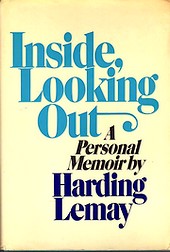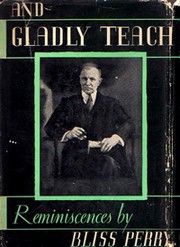Excerpt

After Marianne left with her husband and baby, I prepared a light lunch which Vincent and I ate around Mother’s bed. Then he escaped, first to wash the dishes and then to so unrevealed diversion, and I sat by my mother’s bed, along with her for the first time since I had run away from home thirteen years earlier. Propped up against her pillows in a bedjacket one of her children had sent her, she seemed unusually lucid and oddly girlish. She whispered that she knew I would take care of her; I was the favorite of all her children and I wouldn’t let Marianne go on mistreating her. Her customary lethargy gave way to flirtatiousness and quick, energetic gestures. Grasping her hot hands in mine, I looked into eyes I had evaded for many years and told her than I would not, and could not, rescue her from Marianne. She stared at me in utter disbelief, nodding her head at everything I said, hearing nothing. I told her I was getting divorced (she had never seen my wife), and she nodded her head in approval. I told her I was going to marry again (she had never met Dorothy), and again she nodded approvingly. She forgot, I think, the promise she had tried to extract from me, and rested quietly for most of the afternoon. Once, turning to me, she asked with a childlike clarity of speech, “How old are you, Harding?” “Thirty,” I replied, and she fumbled for my hand. “You’re in the prime of life,” she comforted me, patting my hand as she had often done when I was a boy.
Lying back, she muttered something I couldn’t understand until her urgent movements made me realize she required the bedpan. I raised her flaccid body to perform that function, which embarrassed me far more than it did her. When I came back from emptying the pan in the bathroom, she was asleep, her face peaceful against the pillow, her breath coming in sharp little grunts. I watched her as I was to watch, in later years, our young children asleep in their cribs, merriment and tantrums wiped from their faces, leaving only blank slates upon which a father (a son?) can write what he pleases. She was still sleeping quietly when Marianne and Lou returned, and I made my way back to Manhattan.
Editor’s Comments
Harding Lemay’s memoir, Inside, Looking Out, struck critics and readers alike as an exceptional novelty when it was first published in 1971. At the time, this soul-baring account of Lemay’s painful escape from the poverty, alcoholism, violence, and ignorance of his upbringing and his fitful attempts to establish himself in a career and as a family man stood out from the mass of autobiographies. Disreputable relations, bad habits, and errors of judgment were considered best left unmentioned. Now, after the success of Angela’s Ashes, Me Talk Pretty One Day, Running with Scissors, and other such tales of adolescents emerging from troubled situations, Inside, Looking Out probably seems a bit old hat.
Lemay is best known for his work in the 1970s on the soap opera, “Another World”. When he wrote Inside, Looking Out, however, he had little in the way of conventional accomplishments on which to base an autobiography. He had written a few plays, none of which had got past an off-off-Broadway weekend run. He had spent nearly ten years working for Alfred and Blanche Knopf in their publishing firm, rising to a fairly senior level, but he’d quit that to devote himself full-time to writing. Before the Knopfs, Lemay had worked as a largely unsuccessful actor. His only starring roles were with touring company that performed abridged versions of the classics for high school audiences. His first marriage had ended in divorce; in the Army, he’d deliberately flunked out of officer training; and before getting drafted, he’d lived in a home for wayward boys and shelved books at the New York Public Library. A memoir was hardly what anyone would have expected him to write.
It’s not the facts of Lemay’s life that make Inside, Looking Out worth reading. Instead, Lemay introduced a new dimension to American autobiography. This is a story of mistakes, embarrassments, bad judgments, problems ignored, and hard choices avoided. What makes this something of a novelity for its time is that Lemay portrays his own failures and foibles as honestly as he does of others.
But what makes is most remarkable about Inside, Looking Out is that Lemay does — gradually, haltingly — come to find the character within himself to make those hard choices. He comes to admit that his first marriage is a failure. As he leaves, he throws into a garbage bin all the bits of theatre memorabilia he has made his hobby and his escape. He later leaves a solid position and an excellent salary at Knopf when he comes to recognize its toll on himself and his family. And, as in the excerpt above, he comes to terms with his parents. Lemay never takes his own growth as an excuse for judging others:
For memory may be nothing more than another form of fantasy, in which we ceaselessly arrange and rearrange the incidents of our lives into a pattern we can accept. The honesty with which we present our motives to ourselves may be merely rationalizations for actions we not longer dare to confront, and those we’ve loved and hated, blur together into one haunting image.
Inside, Looking Out was nominated for the 1972 National Book Award for Biography. It lost to Joseph Lash’s Eleanor and Franklin. Dorchester Publishing reissued the book as a paperback in 1982, but it’s been out of print since then. For anyone who appreciated the like of Angela’s Ashes, it’s certainly worth looking for.
Other Comments
- Peter S. Prescott, Newsweek, 3 May 1971
- Harding Lemay’s story is an American classic. … Not a man to attract a biographer’s attentions, but that is the joy of a personal memoir. It does not matter who the author is or what success he has achieved — what matters is the book he fashions from the rough materials of his life. I think that Lemay’s recollections of his family and his service in the court of the Knopfs are themselves worth the book, but the whole is better than that. It is a very tough, unsparing self-evaluation, an honest book that shows how a man not used to honesty can work toward it. It shows how difficult it can be to learn to accept what one is and to build on that. It is, very simply, an account of how a man forced himself to become as full a man as he could be.
- Haskel Frankel, Saturday Review, 5 June 1971
- [This is] a literary event, and — much as I suspect this will embarrass Mr. Lemay — a true inspirational work. He cannot help but be meaningful to the majority of us who just gasp for air in the stranglehold of status and possessions and titles that never produce the happiness we thought came as part of the whole package. In short, I think Inside, Looking Out is as important for what it says as it is beautiful for the simple, controlled way it says it. I cannot recommend it highly enough.
Locate a Copy
Inside, Looking Out: a Personal Memoir, by Harding Lemay
New York: Harper, 1971


